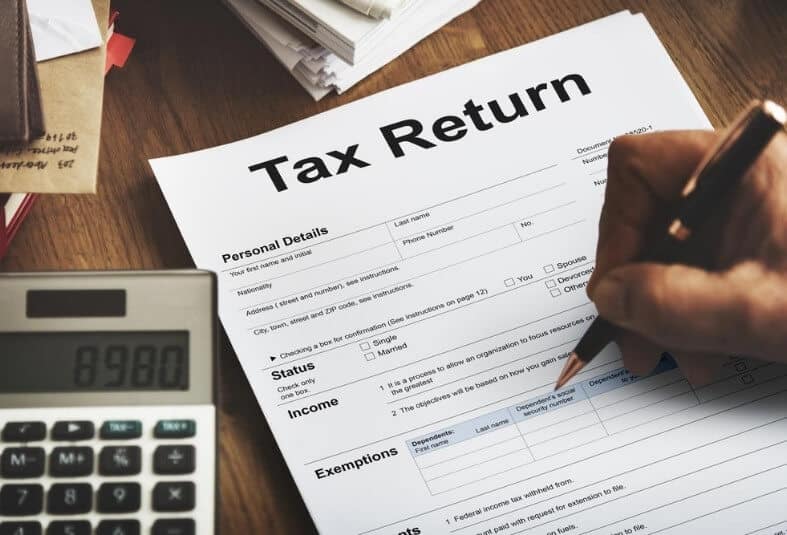Everything You Need to Know About the Australian Tax Return Process
Making Uses Of a Tax Return: Unlocking Possible Savings and Guaranteeing a Larger Tax Reimbursement
The tax obligation return works as a vital tool for individuals looking for to optimize their economic outcomes, providing numerous opportunities for prospective financial savings and enhanced refunds. By leveraging debts and reductions, taxpayers can purposefully reduce their taxable income and improve their general economic standing. The complexities of tax obligation laws and the ever-evolving landscape of tax obligation regulation necessitate a complete understanding of available options. What are the crucial approaches that can be employed to assure that taxpayers exploit on these benefits? The answer might expose greater than simply monetary gains.
Understanding Tax Obligation Deductions
Many taxpayers might discover themselves bewildered by the intricacies of tax reductions, yet understanding these essential parts is vital for taking full advantage of possible financial savings. Tax obligation deductions lower taxable revenue, consequently reducing the total tax obligation obligation for people and organizations. Familiarizing oneself with the numerous kinds of deductions offered can significantly improve one's capability to enhance tax obligation returns.
Reductions can be classified right into itemized and standard reductions. The standard deduction provides a set reduction in gross income, while itemized deductions permit taxpayers to specify details expenditures, such as home mortgage interest, state taxes, and charitable payments. Taxpayers should examine which option yields the greatest advantage, as choosing the ideal reduction technique can bring about substantial cost savings.
Furthermore, it is necessary to preserve accurate documents of deductible costs throughout the tax obligation year. This technique not just helps with the preparation of tax obligation returns yet also guarantees conformity with internal revenue service demands. Taxpayers need to also stay informed concerning changes in tax legislations that may impact eligible deductions, as these can vary every year. By properly going across the landscape of tax obligation deductions, people can expose the capacity for an extra beneficial tax result and secure better monetary advantages.
Discovering Tax Obligation Debts
Tax debts stand for an additional notable avenue for taxpayers to minimize their total tax obligation liability, enhancing the advantages gained from reductions. Unlike reductions, which lower taxable revenue, tax credit histories provide a dollar-for-dollar decrease of the actual tax obligation owed. This distinction makes tax credit scores particularly beneficial for people looking for to optimize their savings.
There are 2 major kinds of tax obligation debts: refundable and nonrefundable. Nonrefundable credit scores can minimize your tax obligation obligation to absolutely no but not listed below that quantity, while refundable credit histories can result in a reimbursement if the credits exceed the tax obligation owed. Examples of commonly claimed tax credit histories include the Earned Revenue Tax Obligation Credit History (EITC), the Kid Tax Credit score, and education-related credits like the American Opportunity Credit.
Qualification needs for these credit histories can differ considerably, typically based on income, filing condition, and details conditions. Taxpayers must extensively review the requirements related to each debt to establish they claim all benefits for which they qualify. By tactically utilizing offered tax obligation credit histories, individuals can enhance their tax returns, eventually causing significant cost savings and possibly larger reimbursements.
Investing Your Refund Wisely
Receiving a Tax refund can seem like an economic windfall, yet just how that money is utilized can greatly affect long-lasting financial wellness. Instead of viewing your refund as disposable income, consider it a chance to spend in your future.

One effective option is contributing to a Private Retired Life Account (INDIVIDUAL RETIREMENT ACCOUNT) This can improve your retired life cost savings while potentially generating tax benefits. Alternatively, spending in a diversified stock portfolio can offer substantial growth possibility gradually, enabling your reimbursement to help you in the marketplace.
In addition, take into consideration utilizing your refund to pay down high-interest debt, such as bank card equilibriums. Reducing debt can improve your monetary standing and ease anxiety, inevitably enabling you to allocate more funds towards financial investments in the future.
For those concentrated on education and learning, using your reimbursement for a 529 university savings strategy can aid safeguard a brighter future for yourself or your children.
Preparation for Future Expenditures
Carefully planning for future expenditures is important for maintaining monetary stability and accomplishing long-term objectives. A well-structured economic strategy enables individuals to assign resources properly, making certain that upcoming expenses do not disrupt their economic health. Tax returns can give a valuable structure for this preparation process.
Using the refund as a springboard, people can determine and prioritize substantial future expenditures, such as home repair work, education and learning expenses, or health care requirements. Developing a spending plan that incorporates these prepared for expenses allows a proactive technique, decreasing the chance visit of economic pressure when the moment pertains to address them.
Moreover, reserving funds from your tax refund into dedicated interest-bearing accounts can enhance the performance of your planning. Australian Tax return online. Take into consideration developing a reserve particularly for unexpected costs, ensuring that you are gotten ready for unexpected situations without hindering your monetary objectives
Usual Errors to Avoid
Numerous individuals make crucial mistakes when managing their tax obligation returns that can weaken their monetary planning initiatives. One common mistake is failing to maintain accurate documents. Inadequate documents can lead to missed deductions, resulting in a reduced reimbursement or higher tax responsibility. It is vital to preserve arranged records of all earnings, costs, and tax-related records throughout the year.
One more constant error is ignoring to assess tax obligation legislation changes. Tax obligation regulations can progress each year, and lack of knowledge of these adjustments might lead to missed possibilities for tax obligation credit reports or deductions. Furthermore, numerous taxpayers forget qualified reductions, such as those for clinical expenses or instructional costs.

Filing taxes too very early or far too late can also be damaging. Early filers may lose out on final tax breaks, while late filers run the risk of fines and interest.
Furthermore, not seeking professional help when essential can bring about costly errors. Tax professionals can give valuable insights, ensuring conformity and making best use of possible cost savings.
Finally, rushing through the return can cause straightforward arithmetic blunders or forgot kinds. Putting in the time to verify all entries is vital like it for an effective tax return end result.
Conclusion
To sum up, the tactical utilization of tax returns serves as an important system for taking full advantage of financial advantages. By thoroughly understanding and applying debts and reductions, people can substantially reduce gross income and improve refund quantities. Additionally, prudent investment of reimbursements and reliable preparation for future expenses contribute to long-lasting financial stability. Awareness of common challenges can also improve the tax obligation process, eventually empowering taxpayers to leverage their returns for a more safe monetary future.
Tax credit histories represent one more significant method for taxpayers to decrease their total tax liability, complementing the benefits gained from reductions. Unlike deductions, which lower taxable income, tax obligation credit ratings offer a dollar-for-dollar decrease of the real tax obligation owed. Nonrefundable credit scores can reduce your tax liability to absolutely no yet not below that quantity, while refundable credit scores can result in a refund if the credit scores surpass the tax owed. Instances of frequently asserted tax credit scores consist of the Earned Income Tax Obligation Credit History (EITC), the Child Tax Credit score, and education-related debts like the American Possibility Credit Score.
Tax guidelines can evolve annually, and ignorance see of these adjustments might result in missed chances for tax credits or reductions. - Australian Tax return online